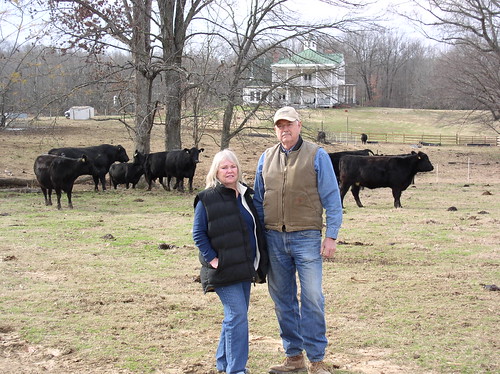
2012 saw the worst drought in a generation. It was exceptionally dry from the northern Great Plains into the Deep South— nearly three-quarters of the country.
“We knew that the carrying capacity of our pastures for next spring would not support our herd,” says Larry Cutliff, who runs a 45-head cow-calf Angus cattle operation in west Tennessee. “The prospect of drastically reducing our herd size was one option we were considering.”

What is a farmer or rancher to do? Those with dwindling water supplies and access to only expensive hay are choosing to sell calves early or further reduce the size of their herd. Many are deciding if this will be the year they cease operations.
Cutliff took action to prepare for the coming year and began working with USDA’s Natural Resources Conservation Service (NRCS) through its Environmental Quality Incentive Program (EQIP). EQIP can help reduce the impact of drought on local farmers and ranchers through conservation.
With NRCS’ help, Cutliff says, “We were able to renovate pastures without having to sell off a portion of the herd to pay for it.” NRCS shared the cost of reseeding 33.5 acres with native cool-season grass mixes, from seed purchase to planting.
Even as the year begins, farmers and ranchers across the country are preparing for another year of moderate to severe drought conditions. NRCS’ conservation programs share the financial burden with landowners to help with conservation practices that not only protect the soil, water and other natural resources, but can also help make their operations more resilient in the face of drought. These practices include permanent reseeding; planting buffers, trees and shrubs; and installing or upgrading water systems such as pipelines and ponds.
In west Tennessee alone, nearly $1.3 million in drought EQIP assistance helped 13 counties last year. The restoration of 7,700 acres of pastureland and installation of 38 livestock watering facilities helped prepare farmers and ranchers for next season’s round of heat and limited rainfall.
NRCS also provides technical assistance to prepare for and rebound from the drought.

As Jason Weller, Acting Chief of NRCS says, “We are not just investing in conservation practices—we’re investing in families, rural communities and future generations.”
Get more information about USDA’s 2012 conservation results. For more information on USDA’s drought assistance, visit www.usda.gov/drought.
Follow NRCS on Twitter
Check out other conservation-related stories on the USDA blog
